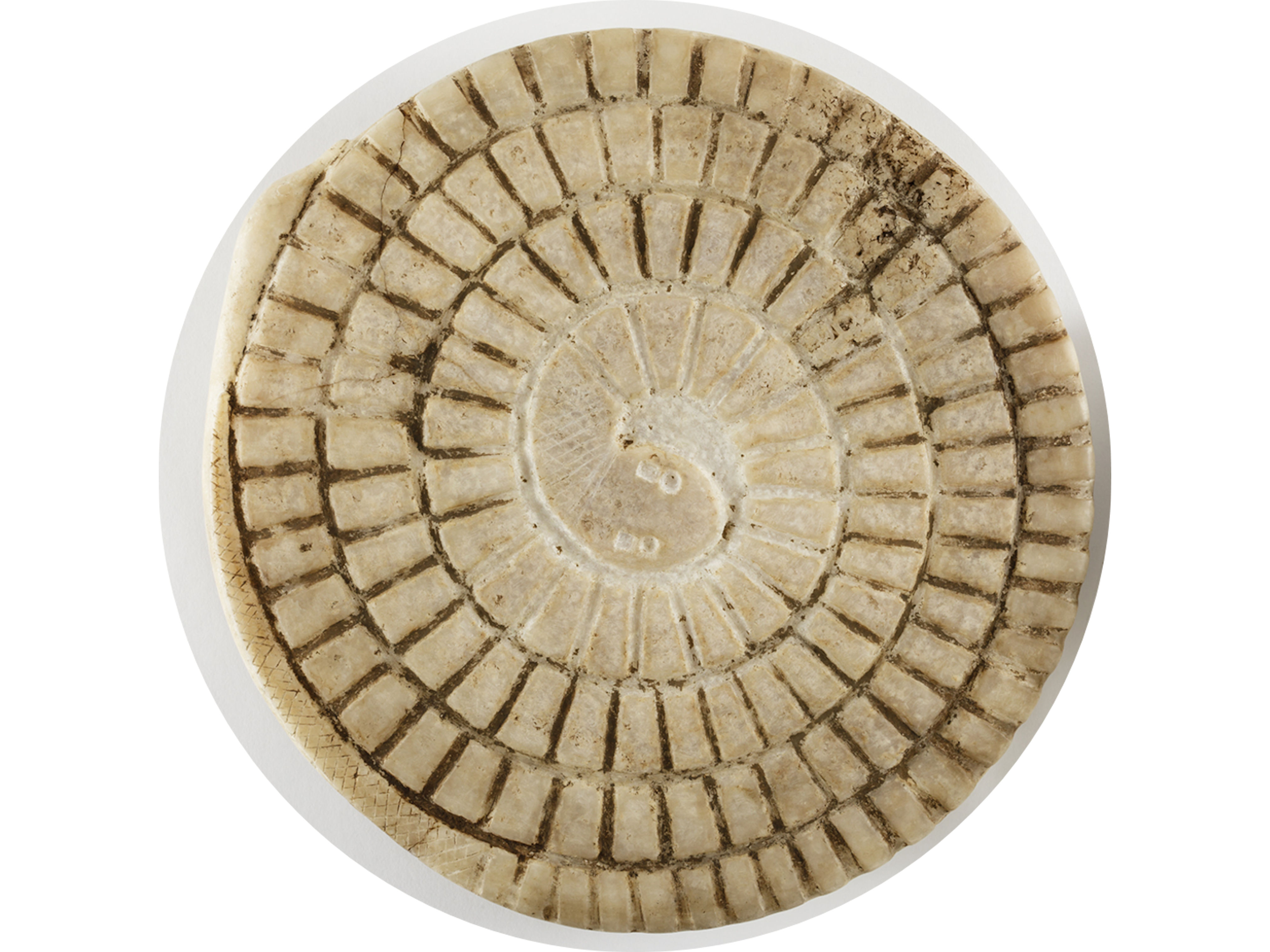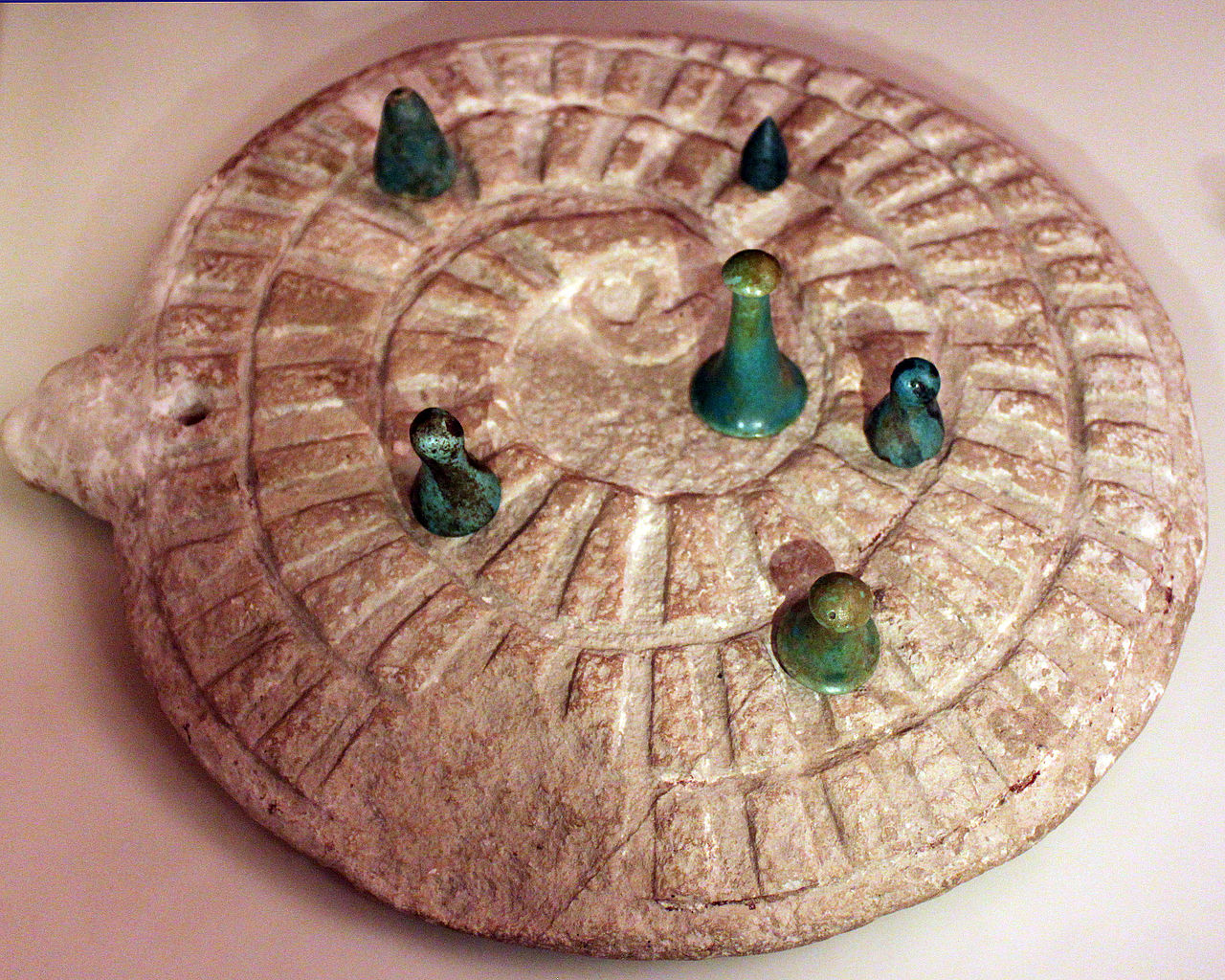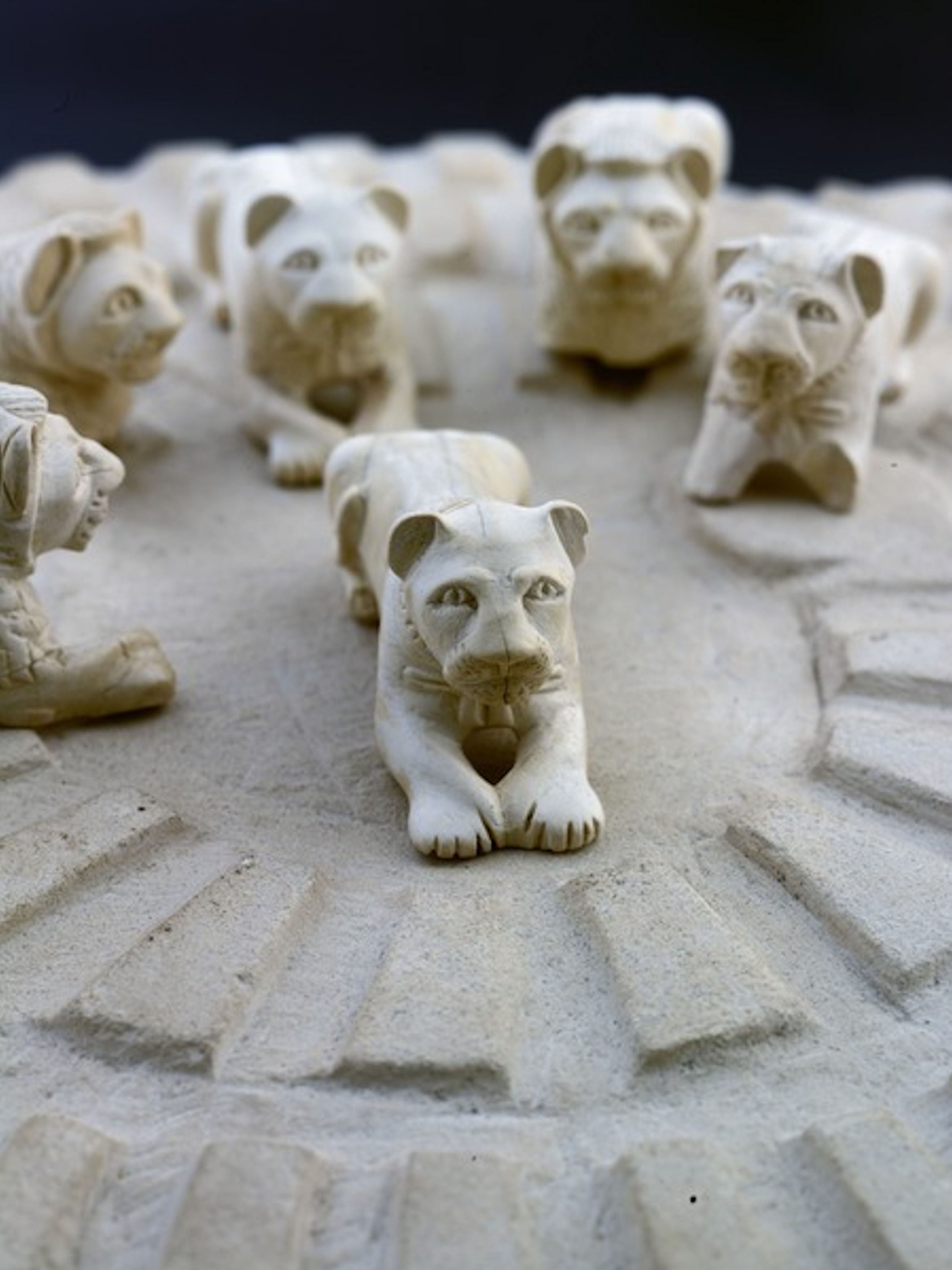Kundalini's Coil
A board game popular in the Lowdown region of the Zone
Introduction
Kundalini's Coil is a traditional board game originating from the Second Orad Kingdom. It is a race game in which players use skill and chance to maneuver their pieces and clear the game board's track of playing squares. The game's iconography is based upon the Kundalini Legend of the White Wyrm and some gameplay elements reflect motifs adapted from Kundalini mythology. The game itself is one of the last vestigial remnants of the lost Orad civilization of Lowdown Island.
Components
The game board is a circular disc representing the spiral coil of a snake's body. The head of a serpent is carved into the center of the board denoting the end of the board's track.
The body of the snake is segmented head to tail into 60-100 playing squares to track movement on the board. A disc-shaped sun token carved with an eagle motif is used to track turns. Game progress, movement, and positioning are represented by stackable wooden, ivory, or stone animal tokens. More elaborate game sets use miniature animal carvings as tokens.
Movements are determined by rolling a set of four-sided, pyramid-shaped dice. Two of the four corners of each die are marked and the other two are not, giving each die an equal chance of landing with a marked or unmarked corner facing up. The number of marked ends facing upwards after a roll of the dice indicates which pieces may move how many spaces a player may move them during that turn.
Setup
Kundalini's Coil may be played by 2-6 players. Each player begins play with seven tokens, representing lion, hippo, boar, horse, dog, turkey, and rat.
The lion pieces begin in the center of the disc (snake head) and all the other six player tokens start off the board at the tail-end of the disc.
The eagle token, representing the sun, also begins off the board at the serpent's tale. The progress of the sun is used to track turns and other game effects.
Game Objective
The object of the game is to move as many of your own pieces as possible to the center of the board and then back to the edge again while preventing your opponents from doing the same. Players must also use their lion token to control the board and capture their opponents' pieces.
Gameplay
Players take turns tossing the dice to determine how to move on the board. Possible moves vary depending upon the result of the throw. Players count the number of marked ends facing up on the dice and then advance one of their pieces exactly that number of playing squares. On a roll of zero (no marked corners land upwards) the player may move
his or her lion piece up to six spaces in any direction. At the end of each player's turn, the eagle sun token moves one space towards the snake head. Once the eagle reaches the middle of the board it changes direction and moves back towards towards the tail. All pieces except for the lion may occupy the same playing square as the sun token.
In order to move one of their pieces to the center of the game disc (onto the snake head), players must roll a result on the dice that will move their token the exact number of required spaces. Once a piece has been moved to the center it is temporarily safe from the lion, but it must leave the center before another of the controlling player's tokens may move onto the center.
A player cannot have two pieces on the serpent's head space at the same time; however, different players may occupy the snake head with one of their pieces at one time. Once a piece leaves the center it travels back through the playing squares towards the tail. In order to move tokens off the board and score points with them, players must once again roll the exact number of required spaces.
The Lion Token
Players may occupy a playing square already occupied by one or more of their own tokens (this is called a stack) but may not move a non-lion token into a space occupied by another player. Players may not stack their lion token with their other pieces or with another lion token. The lion also cannot move onto a playing square occupied by an opponent's stack of tokens, but the lion may be moved onto a space occupied by only one opposing token.
If this happens the player controlling the lion takes the opponent's token off the board and claims it for scoring. Lastly the lion may not move onto a space occupied by the sun token, but the sun may advance onto the same space as a lion. If this happens, the lion can be hunted. While the lion is in the same space as the sun token, any opposing player can move a piece onto that same playing square and capture the lion for scoring.
Play ends when the sun disc has moved from the edge of the board to the center and then back off the edge again.
Scoring
Players score one point for each piece they have moved off the board and one point for every piece they have taken with their lion. A point is lost for every piece that has not been placed on the board. A player scores 3 points for capturing a lion token.
The player with the most points at the end of the game wins.







Comments
Author's Notes
This article was written for prompt 26 of Summer Camp 2019.
Write about a popular card, dice or board game in your world and how it is played.
In order to create "Kundalini's Coil" I took inspiration from the iconography of the ancient Egyptian game known as Mehen. Though the board and pieces for playing Mehen have been preserved, the rules for playing have been lost to time. I adopted Mehen's board and pieces and created an original ruleset based upon the mythology of my world's Ornish snake worshipers.